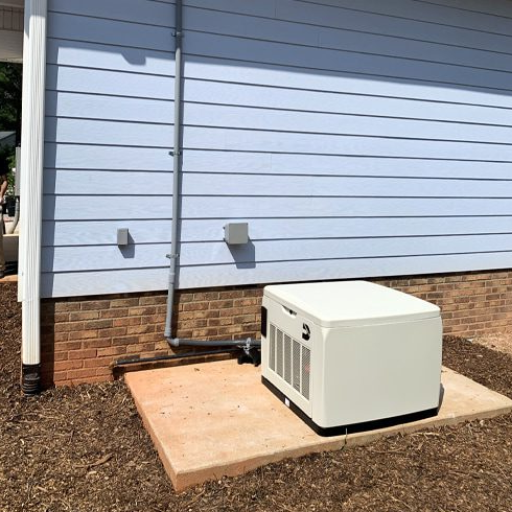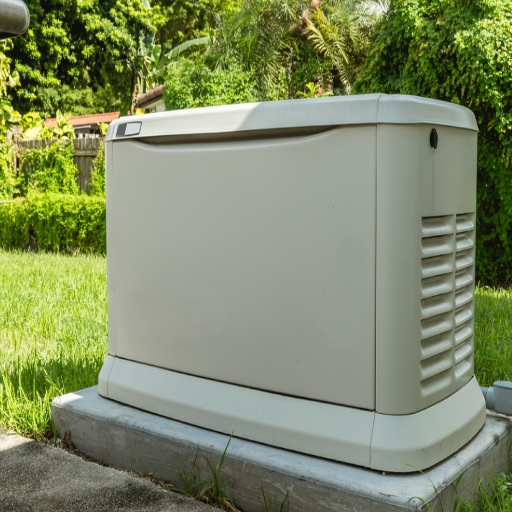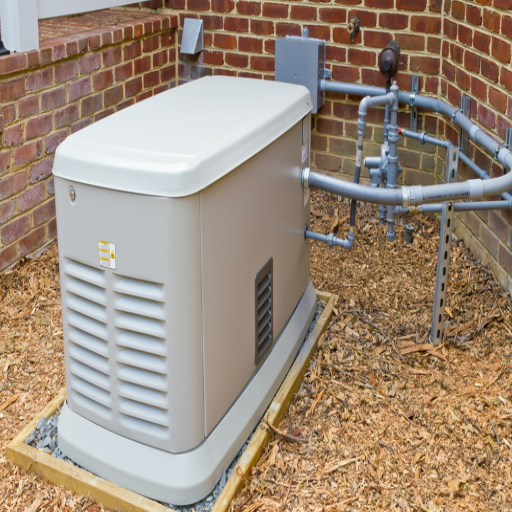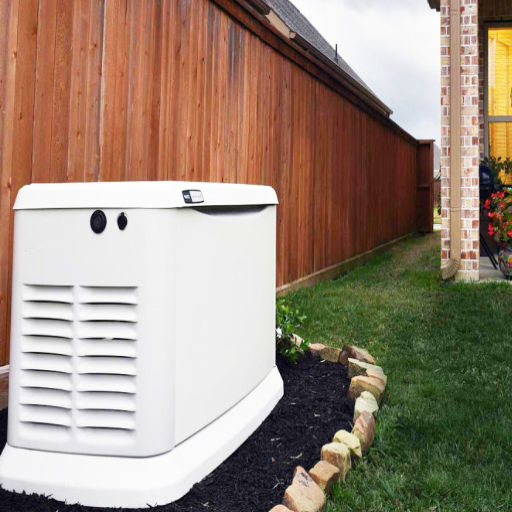Power outages can disrupt daily life, halt essential activities, and compromise home safety. Installing a whole-home generator provides a reliable backup power solution, ensuring uninterrupted electricity during unexpected grid failures. This guide is designed to walk you through the critical aspects of whole-home generator installation, from selecting the right generator size and fuel type to understanding installation requirements and maintenance protocols. Whether you are a homeowner seeking energy independence or aiming to safeguard your family’s comfort, this comprehensive resource will equip you with the knowledge to make informed decisions and achieve a seamless installation process.
What is a whole home generator and why do I need one?

Understanding the difference between portable and standby generators
While the uses for portable and standby generators are different, knowing the differences can assist me with what works best for me.
A portable generator is a mobile unit designed for temporary use. Its output power is typically in the range of 1,000 to 10,000 watts. The power source is usually gasoline, propane, or diesel. These generators are often used for recreational purposes, like camping, or during short power outages. These units require manual operation, making them flexible but also requiring setup such as proper connections to appliances or a transfer switch.
In contrast, a standby generator is a permanent fixture designed to automatically provide power to my home when the power goes out. The output power for these generators usually ranges from 7,000 to over 50,000 watts; hence, they can be used to power an entire household or critical systems depending on the size. Standby generators are permanently connected to the home’s electrical panel and are powered by natural gas or propane. An automatic transfer switch enables them to detect power loss and start the generator immediately. This allows the caretaker to be free of manual start-up.
Analyzing the following power output, fuel type, and operational mechanisms, we can ensure that portable generators are suitable for short-duration and low-capacity applications whereas standby generators are the most ideal for continuous and long-term power security needs.
How a whole home generator adds value to your property
In my opinion, the reliable power supply offered by a whole home generator translates to an increase in property market value and adds to the appeal for potential buyers. Few buyers will be willing to pass up on the comfort provided by the generator during unanticipated grid failures, especially for homes located in regions with harsh weather patterns or grid instability.
A contemporary whole-home generator can connect to a dwelling’s electric system and it is delivered with a substantial output that aligns with the demands of an average household. A generator with a capacity of 20kW-22kW is ideal to supply power for HVAC systems, appliances, lighting, and other essential equipment in an average-sized dwelling. When choosing a generator, factors such as fuel efficiency and noise pollution should be taken into account. Generators powered by natural gas or propane are preferable due to their cleaner emissions and high availability.
Furthermore, today’s whole home generators usually come with automatic transfer switches that switch on instantly during power outages and allow for remote monitoring to facilitate easier maintenance. Such features not only ensure proper functioning but also boost what the residential property is valued at. Spending money on a reliable generator is a common sense decision because it will enhance security and comfort in the house.
How much does it cost to install a whole home generator?

Factors affecting the total cost of generator installation
The total cost of a whole home generator installation is influenced by the following factors:
- Generator Size: This is measured in kilowatts (kW), and affects the cost of the generator. Smaller generators that partially cover homes may range from 7-10 kW and 20-30 kW for whole-home backup systems or more. Larger capacities will generally be more expensive owing to increased power output and hardware complexity.
- Fuel Type and Source: Generators powered by diesel, natural gas, or propane will all have different installation costs depending on the availability of said fuels. For example, connecting to an existing natural gas line will usually be cheaper than installing a new propane tank or diesel system.
- Automatic Transfer Switch: This type of switch is a helpful aid in the event of power outages since it guarantees smooth seamless transitions. The ATS adds some cost, but the size and rating should match the generator capacity to ensure efficiency.
- Placement and Installation complexity: Cost will also increase if the installation site of the generator site is difficult to access owing to requirements such as construction of concrete pads, local setback ,and ventilation compliance. Expenses incurred to adhere to the National Electrical Code (NEC) and local building codes are mandatory.
- Electrical Load Requirements: Various factors manipulate the market costs, including necessary installations such as HVAC systems, appliances, and circuits. This load calculation contemplates meeting customer needs but performing the job in an economically viable way. Hence, every installation costs less than what it would have costed if performed the traditional way.
- Professional Labor and Permits: The variance of costs will always exist and consequently, it is necessary to pay for installation by certified electricians and gas line contractors that charge hefty permit fees and still cater to all the legal requirements.
It is possible to optimize costs while getting the most suitable generator system for the home by properly analyzing professional advice and taking into consideration the factors mentioned above.
Comparing costs: natural gas vs. propane generators
In examining the rates of natural gas and propane generators, I have noticed that many particulars determine the choice. People who use propane better tolerate its expenses because gas generators are usually of lower cost. However, gas generators require a connection, so if a gas line does not exist, there will be further installation charges that need to be accommodated.
In contrast, propane generators provide more options since propane can be stored in specific tanks. They are better suited for areas that lack natural gas service. On the other hand, propane is usually pricier than gas on a per BTU basis. Propane tanks require constant refill and maintenance which adds to the expense.
- Energy density comparison: Natural gas provides around 1,037 BTU of energy in a cubic foot while propane contains 91,500 BTU in a gallon. Thus, propane-powered generators tend to be more fuel efficient with the power-to-fuel ratio being significantly better.
- Operational Costs: Without question, prolonged use of propane-powered generators leads to unwanted excessive expenditure because propane is 2.5 times more expensive than natural gas while accounting for average fuel prices.
- Installation considerations: There are some implications to consider when it comes to installation of any of the systems, for instance, propane setups might clutter the area with storage tanks, whereas natural gas systems could incur greater gas line work costs.
As a result, this requires an assessment of factors such as accessibility to gas lines, the feasibility of installation, and the machine’s desired usage in the future which may affect one’s final decision. Therefore, it is necessary to consider one-time expenses and regular payments in conjunction with these technical specifications for a more financially efficient solution.
What size generator do I need for my entire house?

Calculating your home’s power requirements
Calculating the power needs of your home is the first step to figuring out the right generator size. Increased survivability is conveyed through identifying and wiring your basic appliances: refrigerators, HVAC systems, water heaters, lighting, or even medical devices. Normal Power Consumption – power consumed when the device is on and functioning normally.
- Temporary Power Surge: temporary power consumed when motor-driven devices, such as air conditioners and refrigerators are turned on. This power consumption is usually higher than Normal Power Consumption.
- Power Seminal Value: power measurement taken when multiple devices are turned on at a go: Normal Power Consumption + simultaneous Starting Power.
Additionally, I must consider whether I need a single-phase or three-phase generator, depending on the electrical configuration in my home. For most residential properties, single-phase power is sufficient. By conducting this calculation and analyzing the technical requirements, I can confidently choose a generator that meets my household’s energy needs without overloading or underestimating capacity.
Choosing the right generator size based on appliance needs
When determining the correct size of the generator by what appliances need to be powered, it becomes fundamental to understand the power requirements of every appliance. It is also necessary to have a generator that can support the running wattage as well as the starting (surge) wattage. Running wattage is how much power an appliance consumes on a day-to-day basis. Starting wattage is a temporary additional load put on when an appliance begins to start.
- List Essential Appliances: Identify all appliances that will require power during an outage. For example, a refrigerator, HVAC system, lighting, and medical equipment.
- Calculate Power Requirements: Tabulate the running wattage and starting wattage for each appliance.
- Total the Wattag: To determine the minimum generator capacity necessary, add the starting wattage of the most demanding appliance to the running wattage of all other necessary devices. As an example, if your total running wattage is five thousand watts while the highest starting wattage is two thousand two hundred watts, then your generator has to be at the very least seven thousand two hundred watts.
- Consider Future Load Capacity: A generator that offers an additional 10 to 20% capacity should be chosen to avoid overloading the generator during spikes or when more appliances are added in the future.
- Single-Phase vs. Three-Phase Power: In the majority of residential installations, a single-phase generator is sufficient since homes are wired with a single-phase electrical system. Three-phase generators tend to be used for commercial or industrial purposes in scenarios that require greater power efficiency.
When trying to guarantee a reliable and safe operation during power outages, you can mitigate these hazards by the correct evaluation and eventual selection of a generator with appropriate output wattage and your current electrical setup.
How is a whole home generator installed?

Understanding the role of a transfer switch in the installation
A transfer switch makes it easier and safer to connect a standby generator to a residence or business, and for me, it serves a self-evident purpose of preventing back feeding: the transfer switch is the one device that eliminates the ability for the grid to send electricity to the generator.
Essentially, the transfer switch separates the electrical system of a house from the mains and connects it to the generator. Two types of transfer switches exist, they include:
- Manual Transfer Switches: Where an individual is required to manually operate the generator and because of this, they are usually used in smaller generators or in situations where automatic switching is not helpful.
- Automatic Transfer Switches (ATS): A type of switch that detects when the power goes out, removes the grid connection, installs the generator, and turns it on, all automatically.
When selecting a transfer switch, I would ensure its amperage rating matches the main service panel, such as a 100-amp or 200-amp switch, to avoid potential overloads. Proper installation and wiring are essential, and it must adhere to local electrical codes to guarantee safety and compliance.
The frame for completing a whole home generator installation
Whole house generator installations are completed from anywhere between 2 to 4 weeks. This is mainly dependent on a few factors such as the intricacy of the installation, site conditions, equipment availability, and local permits.
- Site Evaluation and Physical Visit (1-2 Days): A field technician performs an analysis of the premises which defines where the genset will be installed as well as the required power needs, and checks the components of the electrical system.
- Permit Application and Approval (1-3 Weeks): Every construction process comes with its own set of regulations; as such, getting the correct permits is crucial and can be time-intensive depending on the location.
- Preparation of Electrical and Gas Lines (1-2 Days): Alterations to the property’s electric panel, as well as pipes for natural gas or propane put, are needed when installing the generator.
- Installation of the Generator (1 Day): This stage is characterized by attaching the generator to its location, installing the Automatic Transfer Switch (ATS), and linking fuel lines.
- Inspections and System Tests (1 Day): This stage ensures everything is up to code and all systems work as intended in different scenarios.
The installation of a generator can be performed competently and safely by following and appreciating the technical steps described.
Are there any ongoing maintenance requirements for whole home generators?

Regular maintenance tasks to keep your generator in top condition
Your home generator must be properly maintained to work suitably and reliably. Provided below are maintenance principles that need to be catered for:
- Oil and Filter Change: Most generators require an oil change around 80-90% of their total workload. This comes down to 100-200 hours of service or once per year. Regarding the operational environment and the model of the generator, it is necessary to check what type of oil is recommended by the manufacturer. Most generators utilize SAE 10W-30 or 5W-30 synthetic oil.
- Inspection and Replacement of Air Filter: Screencs of the air filter should be performed yearly or every 200 to 400 hours of usage. Filters that are dirty or clogged should be exchanged as they do not provide adequate airflow and cause engine overheating.
- Spark Plug: For every 100 to 200 hours of service, it is important to check the condition of the spark plug. Depending on the state of the electrode, plugs can be cleaned or exchanged to enable gas ignition and later fuel combustion.
- Battery: The generator battery needs a voltage check every three to six months. A fully functional battery needs to provide around 12.4V to 12.6V DC. While getting the voltage, make sure that the terminals are clean and not corroded so that there is decent contact with the generator.
- General Fuel System Checkup: For the petrol lines, connections, and tanks, an annual check up is needed to ensure no leaks are issued. Degraded fuel or diesel that is not suitable for the generator will damage its internal components.
- Load Testing: Load testing of the generator is done twice a year. While doing load testing, the generator should output 22,000 since it has a rating of 22 kW and should output 22,000 watts. There should also not be any fluctuations in voltage and frequency.
- Coolant Check: The coolant level of the generator should always be at the level specified by the manufacturer. The coolant should not be changed before 2-3 years have passed.
- ATS Functionality Check: The ATS implementation should be checked to ensure that it can engage by itself during power outages and can also change back to mains smoothly.
Adhering to these maintenance schedules can significantly extend the operational lifespan of your generator and ensure consistent performance during power outages.
Costs associated with generator maintenance and servicing
The expenses incurred in servicing and maintaining a generator differ with the generator type, its size and running hours as well as the servicing requirements. For routine service maintenance, one has to spend on items such as engine oil, coolant, oil filters, air filters, and even the engine itself. Depending on the usage and the recommendation from the generator manufacturer, these costs are incurred on an annual or biannual basis.
For instance, the provision of oil change services for a typical 22 kW generator ranges between $100 to $300 plus labor costs per outing. A replacement of air filters with attached spark plugs, if needed, will cost an additional $50 to $100 each. Coolant changes, which should occur every 2 to 3 years, can be charged at $100 to $150. Other services that place a charge between $150 – $500 due to their expensive nature include, but are not limited to; inspection and load testing of the generator to ascertain the output performance.
Further charges might include the ATS (Automatic Transfer Switch) testing or changing, which might cost from 250 to 2,000 dollars, depending on the condition the unit is in and its parameters. More sophisticated generators with a modifications like complicated control panels or advanced monitoring systems may need special inspections or calibration that might add more costs.
It is prudent to set aside an annual budget for generator maintenance that takes into account both anticipated service fees and the possibility of unanticipated repairs to have uninterrupted work during crucial times.
Frequently Asked Questions (FAQs)
Q: What is a whole-house generator and how does it differ from a portable generator?
A: A whole-house generator, also known as a standby generator, is a permanent backup power solution that automatically activates when the main power goes out. Unlike a portable generator, it’s installed outside your home and connected directly to your electrical system. Whole-house generators, such as Generac generators, can power your entire home, providing uninterrupted electricity during outages.
Q: How much does a whole home generator cost to install?
A: The generator installation cost varies depending on factors such as the size of your home, the type of generator, and local installation requirements. On average, installing a whole-house generator can range from $5,000 to $15,000. Keep in mind that while the initial investment is significant, it adds value to your home and provides peace of mind during power outages.
Q: What size generator do I need for my home?
A: The size of the generator you need depends on your home’s square footage and the appliances you want to power. A smaller generator may suffice if you only need to run essential items, while a larger whole-house standby generator can power your entire home. To determine the right size, consider factors like your HVAC system, water heater, and major appliances. A professional generator installer can help you calculate your power needs and recommend the appropriate size.
Q: Should I choose a natural gas generator or a gas generator?
A: Both natural gas and propane (gas) generators have their advantages. Natural gas generators are connected to your home’s existing gas line, providing an unlimited fuel supply. Gas generators use propane tanks, which need refilling but offer portability. Your choice may depend on fuel availability in your area, local regulations, and personal preference. Consult with a generator supercenter or installer to determine the best option for your home backup needs.
Q: How long does it take to install a whole-house generator?
A: Installing a whole-house generator typically takes 1-3 days, depending on the complexity of the installation and local permitting requirements. The process involves site preparation, generator placement, electrical and fuel line connections, and installing a generator transfer switch.
Q: What maintenance is required for a home standby generator?
A: Regular maintenance is crucial for keeping your home standby generator in top condition. This includes annual professional inspections, oil changes, filter replacements, and battery checks. Many generator owners opt for maintenance plans offered by their generator installer or manufacturer. Additionally, it’s important to run your generator periodically to ensure it’s ready when you need it. Proper maintenance can extend the life of your generator and ensure it’s always ready to provide backup power.
Q: Are there any additional costs to consider when installing a whole-home generator?
A: Yes, there are some additional costs to consider beyond the initial generator cost and installation. These may include ongoing maintenance, fuel costs (for gas generators), potential increases in homeowner’s insurance, and any necessary upgrades to your home’s electrical system. Some homeowners also choose to invest in a concrete pad for the generator or landscaping to conceal it. While these costs add to the overall investment, many find that the peace of mind and home improvement value outweigh the expenses.
Q: Can I install a whole-house generator myself?
A: While it’s possible to install a portable generator yourself, installing a whole-house generator is a complex process that typically requires professional expertise. It involves electrical work, fuel line connections, and compliance with local building codes. Improper installation can be dangerous and may void your warranty.








